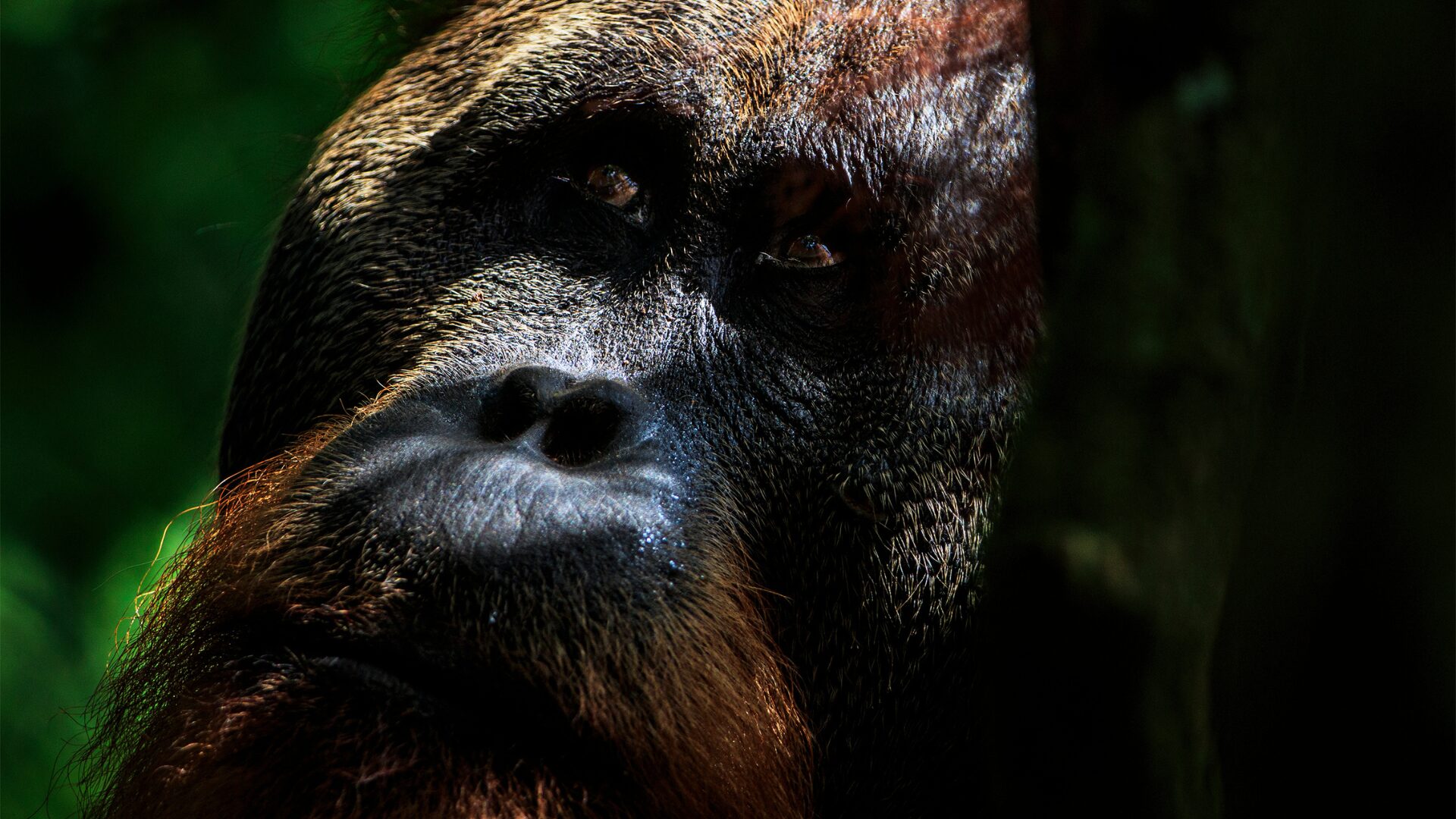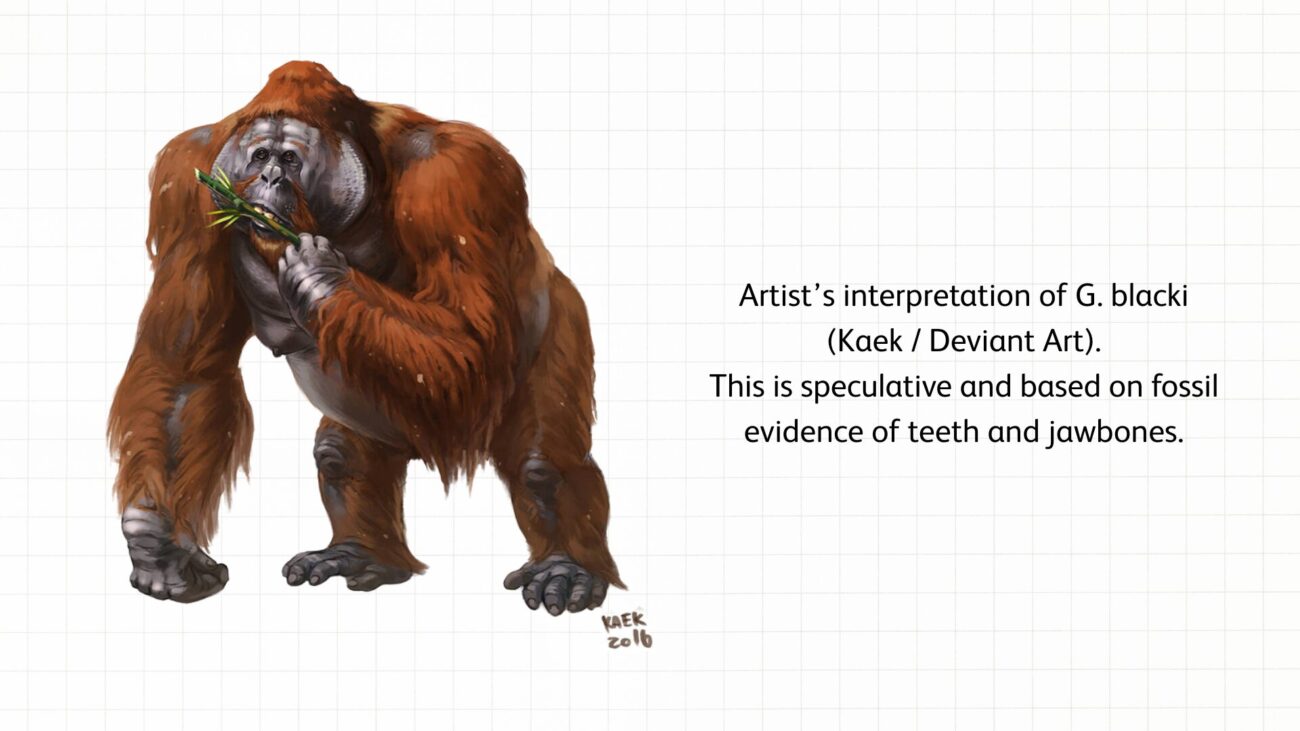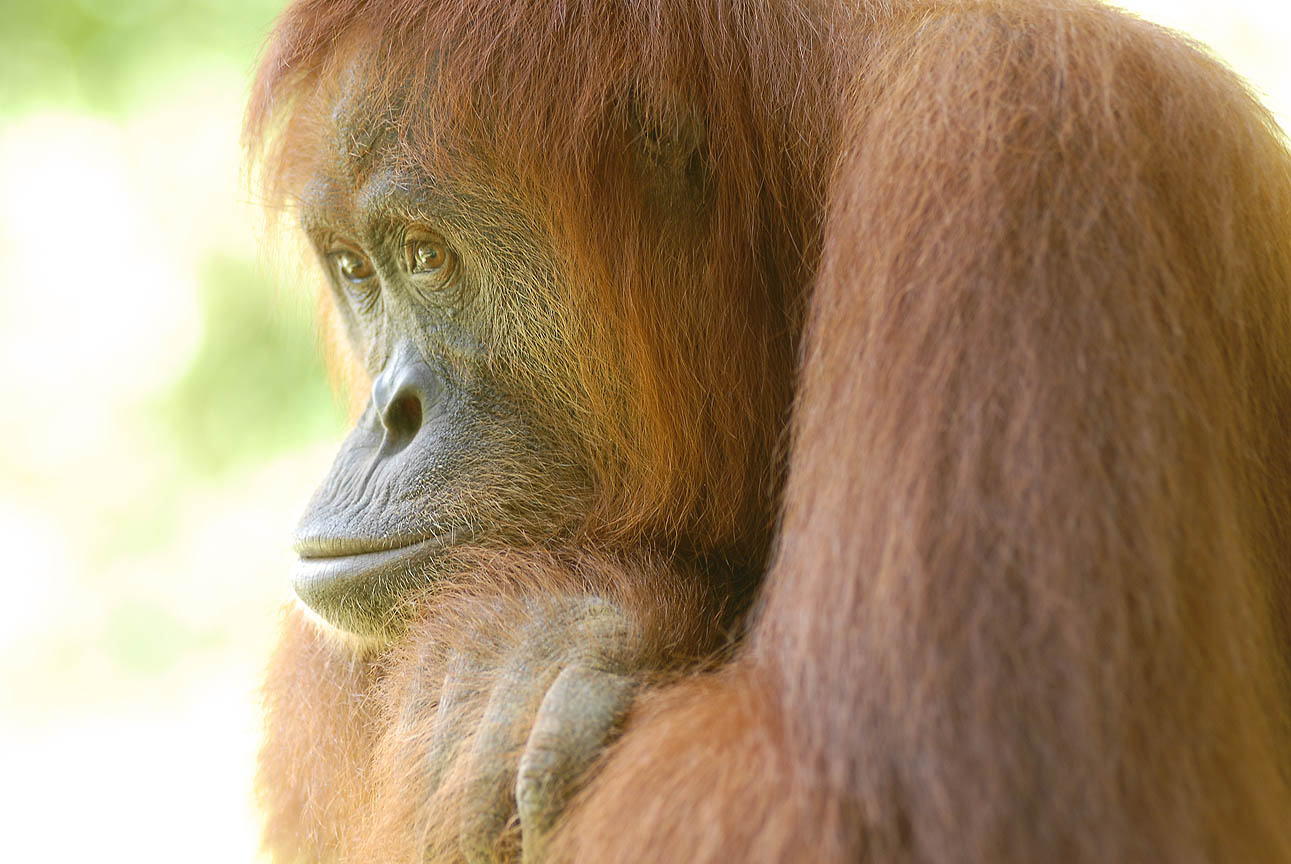
Gigantopithecus blacki – which likely resembled modern orangutans – stood almost 10 feet tall and weighed up to 650 pounds. Giganto roamed the rich forested plains of southern China, munching on a large diversity of fruits. For a long time, the species had a stable population and so, it has been a mystery as to why this giant ape went extinct.
By analysing pollen, sediment, and the teeth of Gigantopithecus, scientists discovered the environment underwent a massive change around 600,000 years ago. As the climate changed, drier conditions turned closed-canopy forests into shrubs and grasslands. The fruit and water sources that Giganto relied on became scarce.

While smaller apes (such as – an extinct species of orangutan) managed to adapt and find new food up in the trees, Giganto was too large. They ate less nutritious foods which led to chronic stress in the population. Ultimately, its struggle to adapt led to the extinction of the largest primate to ever inhabit the Earth.
This study allows us to understand how primates respond to environmental stresses: what makes some species vulnerable and others more resilient. It is a reminder of the impacts of climate change on wildlife and the importance of ensuring orangutan populations are robust and resilient.
You can help protect Sumatra's Orangutans. Click to get updates
